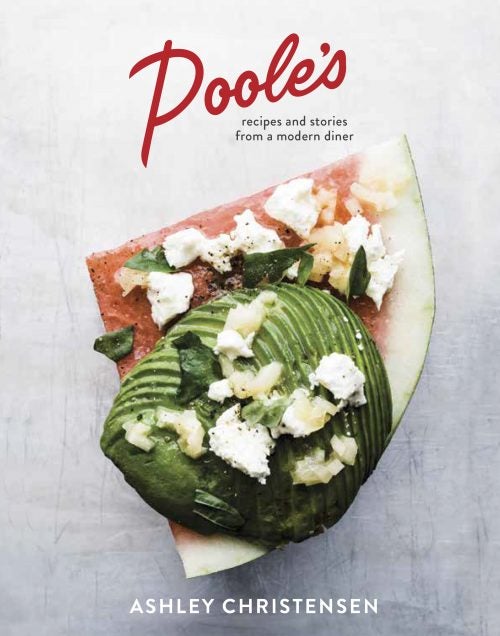











Ashley Christensen explores Southern cooking, paying respect to tradition while adding her own spin on things in Poole’s.
Deviled eggs are another staple from my childhood, and from the childhoods of most Southerners. At weddings, family reunions, and funerals, there’d always be a table lined with plates and Tupperware carriers of deviled eggs, all laden with halved egg whites, their hollows unceremoniously stuffed with mounds of mustard-yellow filling. More than likely, a generous dusting of paprika had, in the journey from kitchen to table, transformed from garnish to a fused element of the egg itself. These plates of eggs stand in my memory as a thing of beauty.
This dish has always been special to me, but as a young, not-yet-secure cook, I was embarrassed at the prospect of its being representative of my “cuisine” and would never have dreamed of putting it on a menu. Then I visited Gabrielle Hamilton’s restaurant, Prune, in New York City. As I devoured my first bistro-born deviled egg, I remember thinking, “It’s okay to serve these in a restaurant? Wow, that’s so cool!”
I often describe my cooking as an exploded-view drawing of simple classics—I focus on every detail and ingredient with care and respectful imagination. My version of the deviled egg may be the perfect example of this philosophy. The details and cuts are sharp, the condiments are housemade, and the egg yolk is fluffy and buttery.
Directions
- Place the eggs in a medium saucepan and cover with 1 inch of cold water. Bring to a rolling boil over high heat. When the water is boiling, cover the pan and turn off the heat. Let sit for 8 minutes. Meanwhile, fill a bowl with ice water. Drain the eggs and immediately transfer to the ice water. Let sit for 10 minutes, then drain the eggs and dry them well. Peel the eggs carefully and slice them in half lengthwise. Remove the yolks, keep¬ing the egg white halves intact.
- In a food processor, combine the yolks and sour cream and puree until smooth.
- In a medium mixing bowl, combine the yolk mixture, onion, cornich¬ons, cornichon juice, mustard, butter, mayonnaise, salt, and a few cranks of pepper. Mix well to combine. (You can prepare the eggs up to this point 1 day ahead: store the whites in the refrigerator, cut side down on a paper towel–lined plate covered with plastic wrap; store the filling separately, covered, in the refrigerator.)
- When you’re ready to fill the egg white halves, line them up on a work surface or arrange them on a serving platter. Place the egg filling in a pastry bag fitted with a star tip and pipe the filling into the egg white halves. Garnish with chives or piment d’Espelette.
- The eggs, once assembled, are best eaten on the day they’re prepared.
Reprinted with permission from Poole’s, copyright © 2016 by Ashley Christensen, published by Ten Speed Press, an imprint of Penguin Random House LLC.

